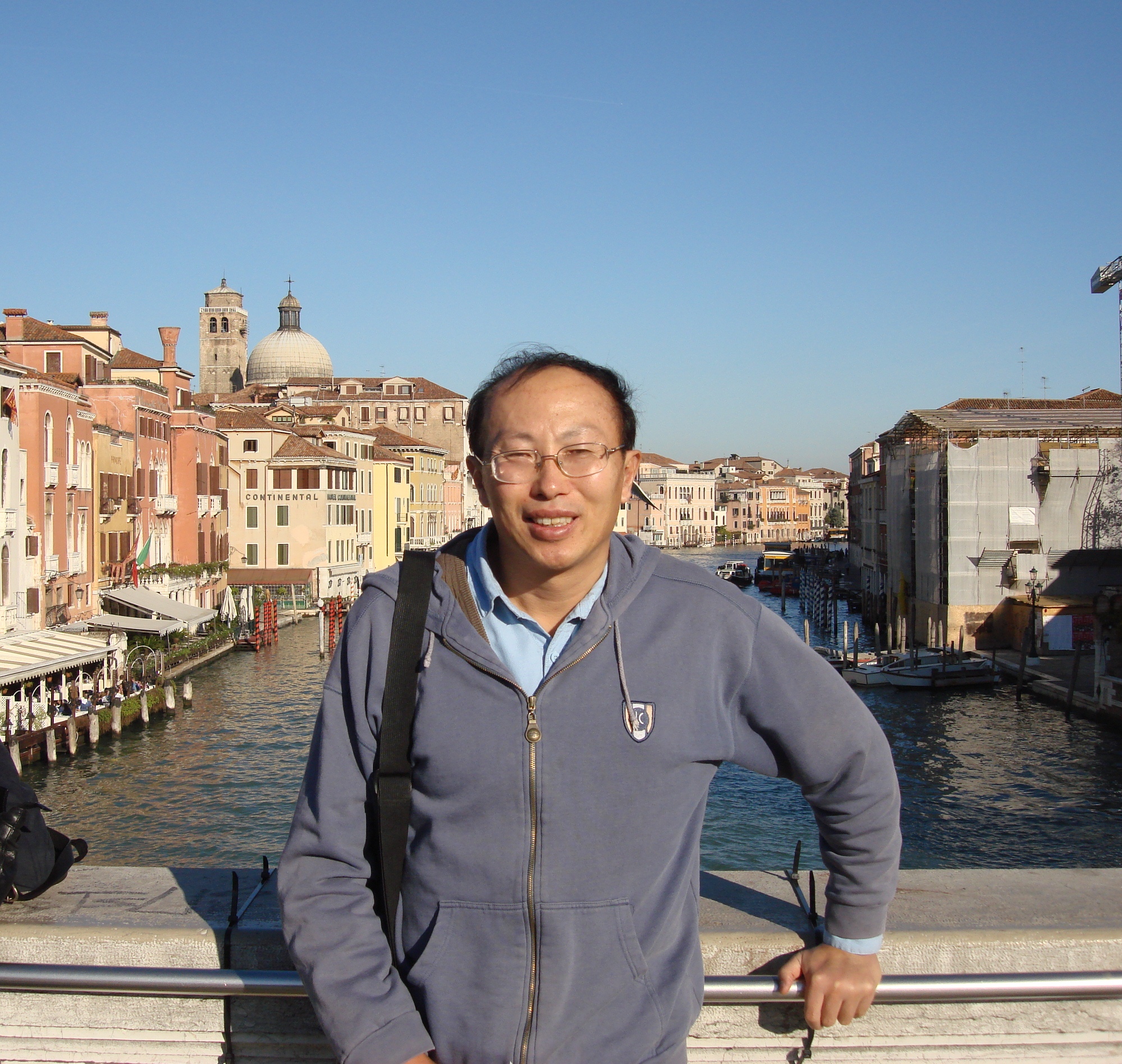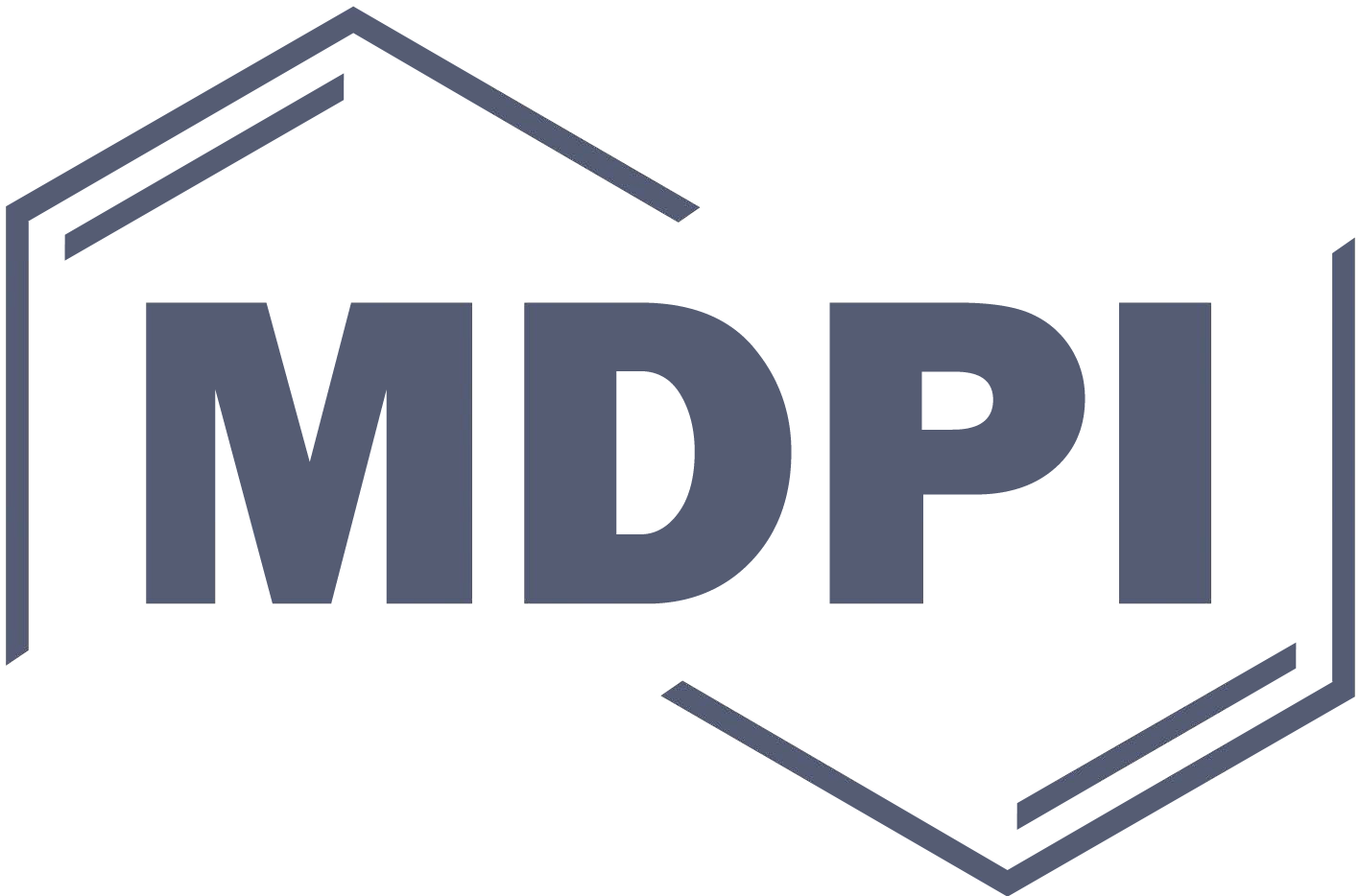
The 2nd International Electronic Conference on Atmospheric Sciences
Part of the International Electronic Conference on Atmospheric Sciences series
16–31 July 2017
ECAS 2017 has been a success! Welcome to the new electronic conference EACS 2023.
Welcome from the Chair
Welcome from the Chairman of the 2nd International Electronic Conference on Atmospheric Sciences

You are cordially invited to participate in the 2nd International Electronic Conference on Atmospheric Sciences. Last year this was a new initiative which affords the opportunity for researchers of atmospheric science to present their research and exchange ideas with their colleagues. We take full advantage of the Internet mitigating the need for travel. Feedback from participants of the first conference indicated that they were pleased with this format and would like to see the meeting grow.
For the second electronic conference in atmospheric sciences, the range of topics will remain more general, but we would be open to future meetings or subject areas having a thematic topic of importance. During the last few decades, great strides have been made in all general areas of atmospheric science. We have seen the proliferation of remote sensing technologies and techniques for their use in research and forecasting. We have seen advances in the understanding of synoptic and dynamic meteorology which have improved weather forecasting. Great strides have been made in atmospheric modelling on all scales. Additionally, there have been discoveries on the behavior of smaller-scale systems, especially those that impact human activity, health, and economics. These have inspired techniques for warning people that these events could affect them. The increased understanding of interannual and interdecadal variability in climate has also led to the development of long range forecasting and projection. The conference will be organized around the following five general and related themes.
- Atmospheric Physics: Remote sensing; satellite and RADAR meteorology; water cycles; nowcasting; mesoscale models
- Atmospheric Chemistry: Air quality; atmospheric chemistry; upper atmospheric chemistry;
- Synoptic and Dynamic Meteorology: Forecasting techniques; cyclone and anticyclone development; the jet stream and its behavior; blocking anticyclones; operational meteorology; forecast skills; forecast models
- Regional Climate and Interannual Variability: El Nino; teleconnections; long range prediction and projection; climate modelling; climate change; downscaling techniques
- Tropical Meteorology: tropical storms; atmosphere–ocean interactions; modelling convection; the general circulation
Accepted papers will be published in the proceedings of the conference in MDPI’s online journal, Atmosphere after peer review.
Prof. Dr. Anthony R. Lupo
Chairman of ECAS 2017
Dr. Anthony R. Lupo, is a Professor of Atmospheric Sciences in the Soil, Environmental, and Atmospheric Sciences Department at the University of Missouri. He earned his BS in Meteorology from the State University of New York at Oswego in 1988, and his M.S. and Ph.D. degrees from Purdue University in 1991 and 1995, respectively. His research has been in the areas of large-scale atmospheric dynamics, climate dynamics, and climate change including modeling, and he has several peer-reviewed publications in each of these areas. Additionally, he edited and contributed to the book Recent Hurricane Research: Climate, Dynamics, and Societal Impacts (published in 2011), and in 2014 and 2015, he was the Lead Guest Editor of the publication Advances in Meteorology Special Issue: Large-Scale Dynamics, Anomalous Flows, and Teleconnections. He has been a member of the American Meteorological Society since 1987 (Certified Consulting Meteorologist #660), and the National Weather Association since 1998. He was a Fulbright Scholar during the summer of 2004 to Russia, studying climate change at the Russian Academy of Sciences in Moscow. He won a second Fulbright to teach and research at Belgorod State University in Russia for 2014–2015. Additionally, he has served as an expert reviewer and/or contributing author to the Intergovernmental Panel on Climate Change (IPCC) (sponsored by the United Nations, World Meteorological Organization) and The Report of the Nongovernmental International Panel on Climate Change (NIPCC) (sponsored by the Heartland Institute) Assessment Reports. The members of the IPCC shared the Nobel Peace Prize in 2007. His other professional associations include the Royal Meteorological Society (Fellow), American Geophysical Union, Sigma Xi, Gamma Sigma Delta, Phi Kappa Phi, and the Missouri Academy of Science (Fellow). He has won awards for teaching and advising at the University of Missouri, including the College of Agriculture, Food, and Natural Resources Senior Teaching Award (2006), the Outstanding Undergraduate Advisor Award (April 2008), and the University of Missouri Kemper Foundation Award for Excellence in Teaching (April 2008). He was awarded the Most Distinguished Scientific Achievement Award by the Missouri Academy of Science (2009), and University of Missouri professor of the year (May, 2010). In Fall 2011, he was chosen to be on the Joint US–Russian Presidents Climate Subgroup of the Science and Technology working group (disbanded in 2014). In October 2013 he was awarded the Outstanding Alum for the year 2013 by the Earth and Atmospheric Science Department at Purdue.
Call for Papers
The 2nd International Electronic Conference on Atmospheric Sciences (ECAS 2017) will be held from 16 to 31 July 2017 online. This event enables the researchers of atmospheric science to present their research and exchange ideas with their colleagues without the need to travel. All proceedings will be published on the conference homepage in open access format.
Through this event, we aim to cover the following topics:
- Atmospheric Physics (Section A)
- Atmospheric Chemistry (Section B)
- Synoptic and Dynamic Meteorology (Section C)
- Climate and Interannual Variability (Section D)
- Tropical Meteorology (Section E)
The conference will be completely free of charge—both to attend and for scholars to upload and present their latest work on the conference platform. There will also be the possibility to submit selected papers to the journal Atmosphere (ISSN 2073-4433; Impact Factor: 1.487 (JCR 2016); 5-Year Impact Factor: 1.793 (JCR 2016)) with a 20% discount on the APCs; ECAS 2017 offers you the opportunity to participate in this international, scholarly conference without having the concern or expenditure of travel — all you need is your computer and access to the Internet. We would like to invite you to “attend” this conference and present your latest work.
Abstracts (in English) should be submitted by 20 June 2017 online at https://www.sciforum.net/login. For accepted abstracts, the full paper can be submitted by 1 July 2017. The conference itself will be held 16–31 July 2017.
We hope you will be able to join this exciting event and support us in making it a success. ECAS 2017 is organized and sponsored by MDPI, a scholarly open access publisher based in Basel, Switzerland.
Paper Submission Guidelines
For information about the submission procedure and preparation of a full presentation, please refer to the "Instructions for Authors".
Conference Chairs
lupoa@missouri.edu
Instructions for Authors
Submissions should be done by the authors online by registering with www.sciforum.net, and using the "New Submission" function once logged into system.
- Scholars interested in participating with the conference can submit their abstract (about 150-300 words covering the areas of manuscripts for the proceedings issue) online on this website until 20 June 2017.
- The Conference Committee will pre-evaluate, based on the submitted abstract, whether a contribution from the authors of the abstract will be welcome for the ECAS 2017. All authors will be notified by 20 June 2017 about the acceptance of their abstract.
- If the abstract is accepted for this conference, the author is asked to submit his/her manuscript, optionally along with a PowerPoint (only PDF) and/or video presentation of his/her paper, until the submission deadline of 1 July 2017.
- The manuscripts and presentations will be available on ECAS 2017 homepage for discussion and rating during the time of the conference 16-31 July 2017.
- Accepted papers will be published in the proceedings of the conference and journal Atmosphere will publish the proceedings of the conference as a Special Issue. After the conference, the authors are recommended to submit an extended version of the proceeding papers to the Atmosphere Special issue with 20% discount on the APC.
Manuscripts for the proceedings issue must have the following organization:
- Title
- Full author names
- Affiliations (including full postal address) and authors' e-mail addresses
- Abstract
- Keywords
- Introduction
- Methods
- Results and Discussion
- Conclusions
- (Acknowledgements)
- References
Manuscripts should be prepared in MS Word and should be converted to the PDF format before submission. The publication format will be PDF. There is no page limit on the length, although authors are asked to keep their papers as concise as possible.
Microsoft Word
Authors must use the Microsoft Word template to prepare their manuscript. Using the template file will substantially shorten the time to complete copy-editing and publication of accepted manuscripts. Manuscript prepared in MS Word must be converted into a single file before submission. Please do not insert any graphics (schemes, figures, etc.) into a movable frame which can superimpose the text and make the layout very difficult.
- Paper Format: A4 paper format, the printing area is 17.5 cm x 26.2 cm. The margins should be 1.75 cm on each side of the paper (top, bottom, left, and right sides).
- Formatting / Style: Papers should be prepared following the style of ECAS 2017 template. The full titles and the cited papers must be given. Reference numbers should be placed in square brackets [ ], and placed before the punctuation; for example [4] or [1-3], and all the references should be listed separately and as the last section at the end of the manuscript.
- Authors List and Affiliation Format: Authors' full first and last names must be given. Abbreviated middle name can be added. For papers written by various contributors a corresponding author must be designated. The PubMed/MEDLINE format is used for affiliations: complete street address information including city, zip code, state/province, country, and email address should be added. All authors who contributed significantly to the manuscript (including writing a section) should be listed on the first page of the manuscript, below the title of the article. Other parties, who provided only minor contributions, should be listed under Acknowledgments only. A minor contribution might be a discussion with the author, reading through the draft of the manuscript, or performing English corrections.
- Figures, Schemes and Tables: Authors are encouraged to prepare figures and schemes in color. Full color graphics will be published free of charge. Figure and schemes must be numbered (Figure 1, Scheme I, Figure 2, Scheme II, etc.) and a explanatory title must be added. Tables should be inserted into the main text, and numbers and titles for all tables supplied. All table columns should have an explanatory heading. Please supply legends for all figures, schemes and tables. The legends should be prepared as a separate paragraph of the main text and placed in the main text before a table, a figure or a scheme.
For further inquiries please contact the Conference Secretariat.
Authors are encouraged to prepare a presentation in PowerPoint, to be displayed online along with the Manuscript. Slides, if available, will be displayed directly in the website using Sciforum.net's proprietary slides viewer. Slides can be prepared in exactly the same way as for any traditional conference where research results can be presented. Slides should be converted to the PDF format before submission so that our process can easily and automatically convert them for online displaying.
Authors are also encouraged to submit video presentations. The video will be uploaded to Youtube, as well as onto Sciforum. The video should be no longer than 20 minutes and be prepared with the following formats,
- .MOV
- .MPEG4
- .MP4
- .AVI
- .WMV
- .MPEGPS
- .FLV
The video should be submitted via email before 10 July 2017.
Posters will be available on this conference website during and after the event. Like papers presented on the conference, participants will be able to ask questions and make comments about the posters. Posters that are submitted without paper will not be included in the proceedings of the conference.
It is the authors' responsibility to identify and declare any personal circumstances or interests that may be perceived as inappropriately influencing the representation or interpretation of clinical research. If there is no conflict, please state here "The authors declare no conflict of interest." This should be conveyed in a separate "Conflict of Interest" statement preceding the "Acknowledgments" and "References" sections at the end of the manuscript. Financial support for the study must be fully disclosed under "Acknowledgments" section. It is the authors' responsibility to identify and declare any personal circumstances or interests that may be perceived as inappropriately influencing the representation or interpretation of clinical research. If there is no conflict, please state here "The authors declare no conflict of interest." This should be conveyed in a separate "Conflict of Interest" statement preceding the "Acknowledgments" and "References" sections at the end of the manuscript. Financial support for the study must be fully disclosed under "Acknowledgments" section.
CopyrightMDPI AG, the publisher of the Sciforum.net platform, is an open access publisher. We believe that authors should retain the copyright to their scholarly works. Hence, by submitting a Communication paper to this conference, you retain the copyright of your paper, but you grant MDPI AG the non-exclusive right to publish this paper online on the Sciforum.net platform. This means you can easily submit your paper to any scientific journal at a later stage and transfer the copyright to its publisher (if required by that publisher).
List of accepted submissions (26)
| Id | Title | Authors | Poster PDF | ||||||||||||||||||||||||||||||||||||||
|---|---|---|---|---|---|---|---|---|---|---|---|---|---|---|---|---|---|---|---|---|---|---|---|---|---|---|---|---|---|---|---|---|---|---|---|---|---|---|---|---|---|
| sciforum-012146 | Vortex motion state of the dry atmosphere with nonzero velocity divergence | , , , | N/A |
Show Abstract |
|||||||||||||||||||||||||||||||||||||
|
In the present work an analytical model of the vortex motion elementary state of the dry atmosphere with nonzero air velocity divergence is constructed. It is shown that the air parcel moves along the open curve trajectory of spiral geometry. It is found that for the case of nonzero velocity divergence the atmospheric elementary state presents an unlimited sequence of vortex cells transiting from one to another. On the other hand, at zero divergence, the elementary state presents a pair of connected vortices, and the trajectory is a closed curve. If in some cell the air parcel moves upward then in the adjacent cell it will move downward and vice versa. At reaching the cell middle height the parcel reverses the direction of rotation. When parcel moves upward, the motion is of anticyclonic type in the lower part of the vortex cell and of the cyclonic type in the upper part. When parcel moves downward, the motion is of anticyclonic type in the upper part of the vortex cell and of the cyclonic type in the lower part. |
|||||||||||||||||||||||||||||||||||||||||
| sciforum-012173 | Molecular fragmentation of acetylene by VUV double photoionization |

|
Show Abstract |
||||||||||||||||||||||||||||||||||||||
|
Acetylene is a simple molecule of interest for interstellar medium (ISM) and planetary atmospheres. The presence of C2H2 was detected by IR spectroscopic measurements [1]. Acetylene was also found as a minor component in the atmosphere of gas giants like the planet Jupiter, in the atmosphere of Saturn's satellite Titan, and in comets, where photochemical experiments have demonstrated that this simple hydrocarbon is a likely precursor of C2, a widely observed component in such environments [2-4]. It has to be noted that the presence in planetary atmospheres and ISM of Vacuum Ultra Violet (VUV) light’s photons as well as cosmic rays makes highly probable the double photoionization of molecular species with the production of molecular dications producing subsequent dissociation into ionic fragments having a high kinetic energy content of several eV. This translational energy is sufficient in some cases to allow ions escape from the upper atmosphere of some planet of the Solar System, as Venus, Mars and Titan, into space [5-7]. In this contribution we present the experimental study of the microscopic dynamics of the two-body dissociation reactions of the C2H2+2 dication, induced by the double ionization of acetylene molecules by VUV photons in the energy range of 31.9-50.0 eV. The photoionizing agent was a tunable synchrotron radiation beam with a photon energy resolution of about 1.5 meV, while ion products are revealed by coupling photoelectron-photoion-photoion-coincidence and ion imaging techniques [8]. The measured angular distributions and kinetic energy of product ions exhibit significant changes (as the photon energy increases) for the three leading dissociation reactions producing H++C2H+, C++CH2+, and CH+ + CH+, providing detailed information on the fragmentation dynamics of the C2H22+ dication. [1] O. Witasse et al. 2002, Geophys. Res. Lett., 29, 1263 1-4. [2] T. Y. Brooke et al., 1996, Nature, 383, 606-608. [3] J. Cernicharo et al., 2001, Astrophys. J., 546, L123-L126. [4] P. M. Woods et al., 2002, Astrophys. J., 574, L167-L170. [5] R. Thissen et al., 2011, Phys. Chem. Chem. Phys., 13, 18264–18287. [6] S. Falcinelli et al., 2014, Planetary and Space Science, 99, 149-157. [7] S. Falcinelli et al., 2016, Atmosphere, 7(9), 112. [8] S. Falcinelli et al., 2017, Acta Physica Polonica A, 131(1), 112-116. |
|||||||||||||||||||||||||||||||||||||||||
| sciforum-012183 | Wintertime atmospheric blocking events in Western Siberia in the period 2004-2016 and their connection with anomalies of surface temperature | , , |

|
Show Abstract |
|||||||||||||||||||||||||||||||||||||
|
Atmospheric blockings are one of the main causes of many natural disasters (droughts, floods, fires, frosts) that have become more frequent recently. We study wintertime blocking events in 2004 – 2016 over Western Siberia and their influence on the surface temperature. The period 2004 – 2016 is very interesting for study because there has been an increase in the blocking frequency over Western Siberia beginning with 2004. In the work we used data ECMWF ERA Interim (geopotential, surface temperature) and criterion proposed by Tibaldi and Molteni. We investigated blockings events with a duration of 5 days or more for winter intervals (1 November – 31 March). We have chosen 15 blockings events: December 2004, January-February 2005, December 2005, November 2006, January 2008 (two events), December 2008, December- January 2010-2011, January 2011, February 2011, December 2011, January-February 2012, December 2012, February-March 2015, December 2015- January 2016. For each event we calculate surface temperature anomaly in the grid points for two sectors 60 – 90 E; 50 – 60 N (southern part of West Siberia) and 60 – 90 E; 60 – 70 N (northern part of West Siberia). Anomalies were calculated as deviation of daily surface temperature values from 1979 – 2015 mean. To estimate advective transfer for studied 15 events we analyzed the potential temperature on the dynamical tropopause (PV-θ). We showed that wintertime blocking events over the Western Siberia lead to the surface temperature increase in the northern part of West Siberia and to the surface temperature decrease in the southern part of West Siberia. This feature apparently due to warm air masses advection from south-west on the western periphery of the blocking ridge (reinforcing it) and arctic air masses intrusion to the southern part of the Western Siberia on the eastern periphery of this ridge. This research was supported by the Russian Foundation for Basic Research grants no. 17-05-00119 and no. 17-05-00374 |
|||||||||||||||||||||||||||||||||||||||||
| sciforum-012299 | The predictability of Northern Hemispheric blocking events using an ensemble mean forecast system. | , , , |

|
Show Abstract |
|||||||||||||||||||||||||||||||||||||
|
Some weather extremes can be the result of atmospheric blocking, which can be responsible for the the stagnation of weather patterns. These large-scale quasi-stationary mid-latitude flow regimes can result in significant temperature and precipitation anomalies in the regions that the blocking event impacts. The ability to predict periods of anomalous weather conditions due to atmospheric blocking is a major problem for medium-range forecasting. Analyzing the NCEP Ensemble 500-mb pressure heights (240 hrs.) ten-day forecasts, and using the University of Missouri blocking archive to identify blocking event, the forecasted duration and intensity of model blocking events are compared to observed blocks. Comparing these differences using four case studies occurring over a one-year period across the Northern Hemisphere has shown the continued need for improvement of the duration and intensity of blocking events. Additionally, a comparison of the block intensity to a diagnostic known as the Integrated Regional Enstrophy (IRE) was performed in order to determine if there is a correlation between these quantities. Having a better understanding of knowing how long each block will last and their associated anomalies can help society prepare for the damage they can cause. Knowing how to correctly identify blocks is important in improving forecast issues. |
|||||||||||||||||||||||||||||||||||||||||
| sciforum-012417 | Monitoring and evaluation of Terni (Central Italy) air quality through spatially resolved analysis | , , , , , , | N/A |
Show Abstract |
|||||||||||||||||||||||||||||||||||||
|
The air quality of Terni was evaluated during a six months monitoring campaign carried out from December 2016 to May 2017. Terni is a city of Central Italy situated in an intramountain depression delimited by the Apennine mountain range. It contains many sources of airborne particulate matter such as vehicular traffic, domestic heating, a power plant for waste treatment and a steel plant. Furthermore, the meteorological conditions of Terni basin limit the dispersion and enhance the accumulation of the atmospheric pollutants. Hence, Terni is an ideal area for the mapping of the spatial variations of PM10 chemical species through innovative analytical methods. Spatially resolved data were obtained at a monthly temporal resolution by innovative, low flow and self-powered samplers working in parallel at 25 strategic sites. PM10 chemical composition was determined by applying a multiparametric procedure (macro-elements, micro-elements and inorganic ions) previously optimized and validated [1]. This procedure enabled the separation between the water-soluble and the residual fraction of each analyzed element. The application of a chemical fractionation procedure proved to be a valuable approach for the characterization of PM10 and for increasing the selectivity of elements as source tracers [2]. The spatial mapping of the source tracers resulted to be efficient for the individuation of the PM10 chemical source profiles and for the evaluation of the dispersion capacities of PM10 chemical species. In addition silent samplers were utilized to evaluate the air quality of indoor environments (such as dwellings and schools) by calculating the infiltration ratio (indoor/outdoor concentration) of each analyzed source tracer. The information obtained can be used to validate the dispersion models and to improve the evaluation of human exposure to PM.
References [1] S. Canepari, E. Cardarelli, A. Giuliano, A. Pietrodangelo, Talanta 69 (2006) 581–587. [2] S. Canepari, A. Pietrodangelo, C. Perrino, M.L. Astolfi , M.L. Marzo, Atmospheric Environment 43 (2009) 4754–4765.
|
|||||||||||||||||||||||||||||||||||||||||
"CALL FOR SESSIONS"
The Second International Electronic Conference on Atmospheric Sciences (ECAS 2017) will be held from 16 to 31 July 2017. This event enables researchers of atmospheric science to present their research and exchange ideas with their colleagues without the need to travel. All proceedings will be published on the conference homepage in open access format.
ECAS 2017 is now inviting proposals for sessions to be held at the conference. Anyone specialized in atmospheric sciences with an interest in discussing emerging issues of atmospheric sciences and participating in this online conference is welcome to propose a session.
Proposals will be selected on the basis of merit and the need to create a well-balanced program. Topics covered in this edition may include, but are not limited to:
- Atmospheric Physics
- Atmospheric Chemistry
- Synoptic and Dynamic Meteorology
- Regional Climate and Interannual Variability
- Tropical Meteorology
Submission Guidelines
Session proposals should be submitted to ecas@mdpi.com before 28 February 2017. Proposals should include the following information,
- The session title
- The names, institutions, and contact details for 1–2 conveners
- A session description up to 250 words
Contact
For more information, please contact the conference chair, Prof. Anthony R. Lupo, at lupoa@missouri.edu or the Conference Secretariat at ecas@mdpi.com.
Scientific Committe
|
|
|
Prof. Dr. Anthony R. Lupo University of Missouri Columbia MO |
 |
 |
 |
| Prof. Dr. Luis Gimeno, Facultad de Ciencias de Ourens, Spain | Prof. Dr. Yafei Wang, Chinese Academy of Meteorological Science, China | Prof. Dr. Nicole Mölders, University of Alaska Fairbanks, USA |
Prof. Dr. Igor I. Mokhov, Russian Academy of Sciences, Russia
Prof. Dr. Patrick Market, University of Missouri-Columbia, USA
About This Conference
About The 2nd International Electronic Conference on Atmospheric Sciences
Through this event, we aim to cover the following topics:
A: Atmospheric Physics
remote sensing
satellite and RADAR meteorology
water cycles
nowcasting
mesoscale models
B: Atmospheric Chemistry
Air quality
atmospheric chemistry
upper atmospheric chemistry
C: Synoptic and Dynamic Meteorology
Forecasting techniques
cyclone and anticyclone development
the jet stream and its behavior
blocking anticyclones
operational meteorology
forecast skills
forecast models
D: Regional Climate and Interannual Variability
El Nino
teleconnections
long range prediction and projection
climate modelling
climate change
downscaling techniques
E: Tropical Meteorology
tropical storms
atmosphere–ocean interactions
modelling convection
the general circulation
Conference Organizers

MDPI (Multidisciplinary Digital Publishing Institute) is an academic open-access publisher with headquarters in Basel, Switzerland. Additional offices are located in Beijing and Wuhan (China), Barcelona (Spain) as well as in Belgrade (Serbia). Our publishing activities are supported by more than 12,800 active scientists and academic editors on our journals' international editorial boards, including several Nobelists. More than 216,400 individual authors have already published with MDPI. MDPI.com receives more than 4.2 million monthly webpage views.

Atmosphere is an open access journal, covered by leading indexing services, including the Science Citation Index Expanded (Web of Science), Scopus, Compendex / Engineering Village, among others. The latest Impact Factor for the year 2016 is 1.487, and the five-year impact factor is 1.793. Its subject areas includes:
- Atmospheric Chemistry
- Atmospheric Physics
- Air Quality
- Air Quality – Climate Interactions
- Meteorology
List of Keynotes & Videos
C. Synoptic and Dynamic Meteorology
Show all published submissions (5) Hide published submissions (5)
Submissions
List of Papers (5) Toggle list
D. Climate and Interannual Variability
E. Tropical Meteorology
Show all published submissions (2) Hide published submissions (2)
Submissions
List of Papers (2) Toggle list














